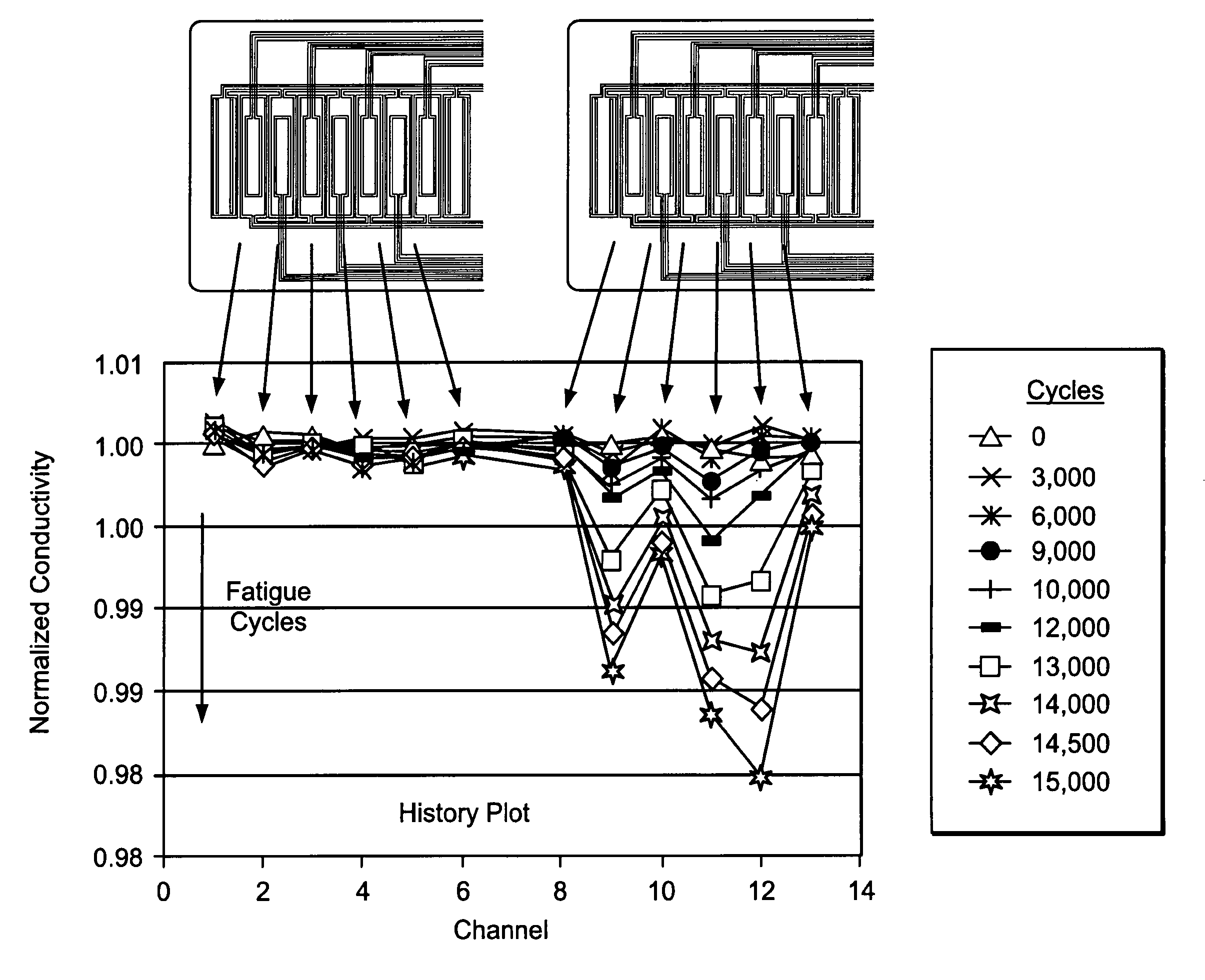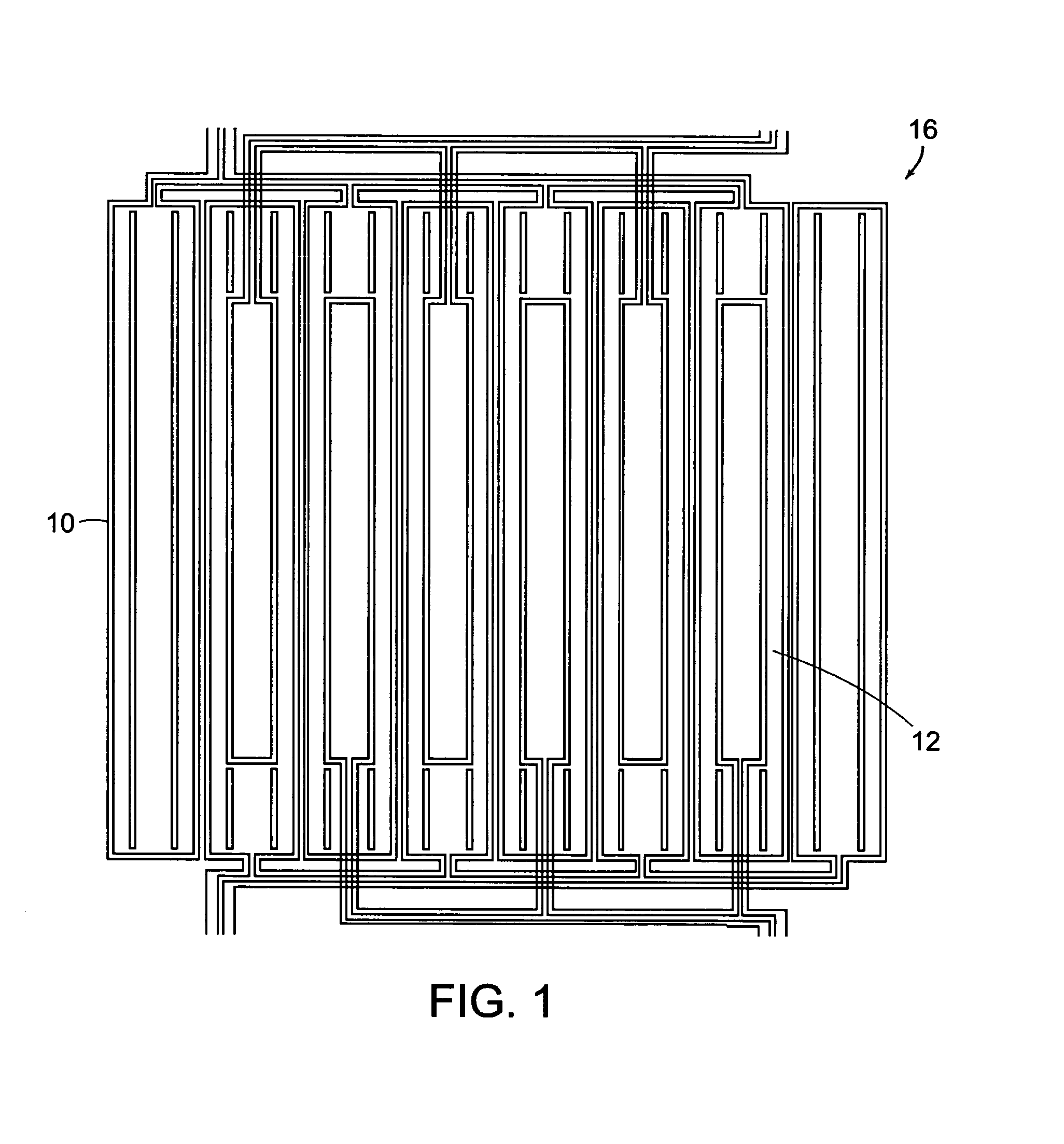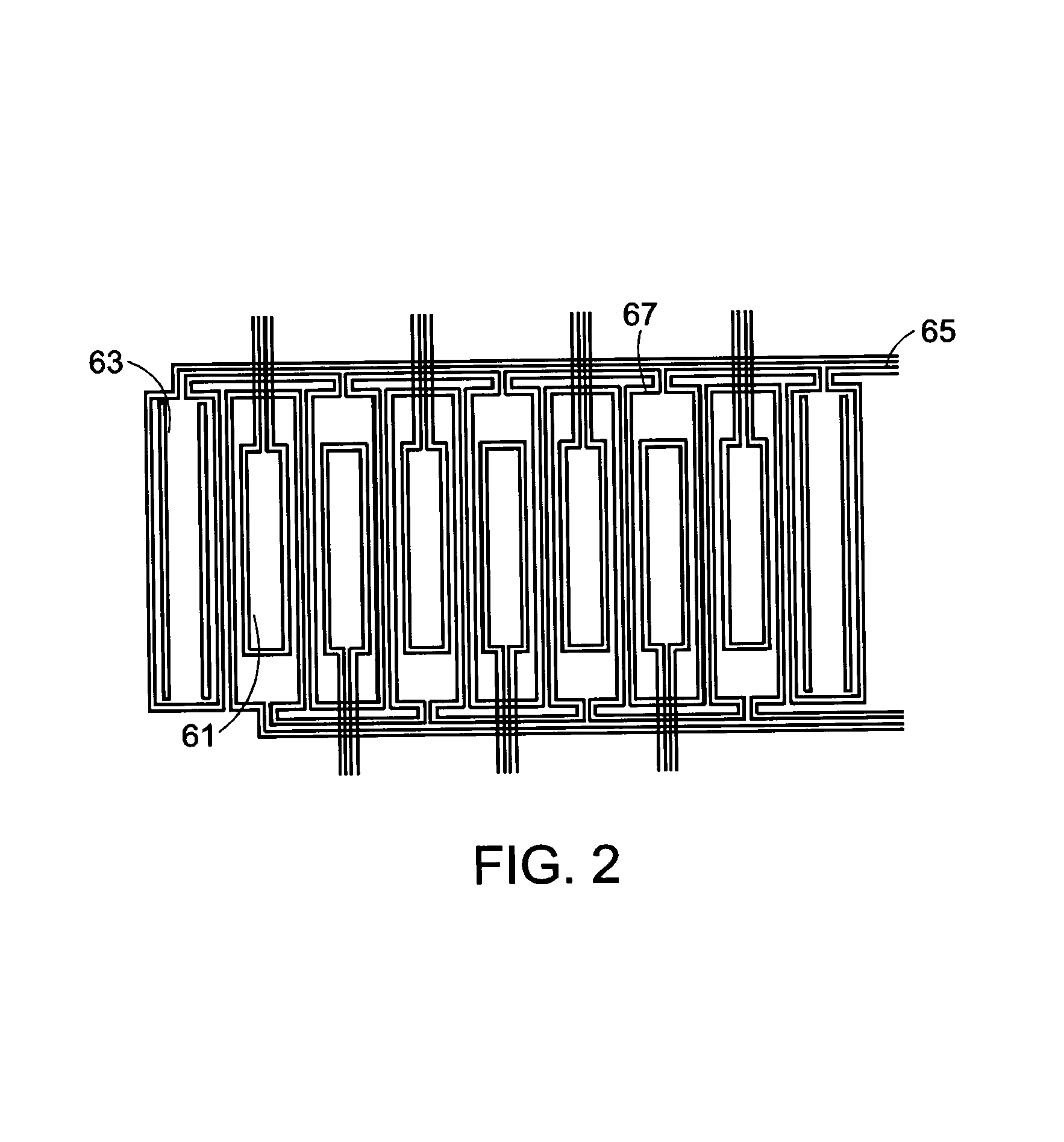Fabrication of samples having predetermined material conditions
a technology of predetermined material conditions and sample, applied in the direction of material magnetic variables, magnetic property measurements, instruments, etc., can solve the problems of thermal damage, damage to precursor states, etc., and achieve the effect of assessing the capability of sensors
- Summary
- Abstract
- Description
- Claims
- Application Information
AI Technical Summary
Benefits of technology
Problems solved by technology
Method used
Image
Examples
Embodiment Construction
[0033]A description of preferred embodiments of the invention follows.
[0034]This application is directed toward the use of sensor and sensor arrays during monitoring of fatigue damage to create reference samples and standards having real fatigue cracks. These standards can be used for sensor standardization in the field and reliability studies for validating sensors or measurement methods. One objective may be to generate specimens with realistic cracks under conditions as close to reality as feasible, and even to generate conditions of interest in actual components, if necessary. Conditions of interest may include cracks in holes, on curved surfaces, on shot peened surfaces, in and under coatings and at buried surfaces. One embodiment of the invention uses permanently mounted sensors, such as MWM®-Array eddy current sensors, to detect crack initiation and monitor crack growth. These sensors have been used in fatigue tests of coupons and components as well as full-scale fatigue test...
PUM
| Property | Measurement | Unit |
|---|---|---|
| shape | aaaaa | aaaaa |
| mechanical loading | aaaaa | aaaaa |
| thermal | aaaaa | aaaaa |
Abstract
Description
Claims
Application Information
 Login to View More
Login to View More - R&D
- Intellectual Property
- Life Sciences
- Materials
- Tech Scout
- Unparalleled Data Quality
- Higher Quality Content
- 60% Fewer Hallucinations
Browse by: Latest US Patents, China's latest patents, Technical Efficacy Thesaurus, Application Domain, Technology Topic, Popular Technical Reports.
© 2025 PatSnap. All rights reserved.Legal|Privacy policy|Modern Slavery Act Transparency Statement|Sitemap|About US| Contact US: help@patsnap.com



